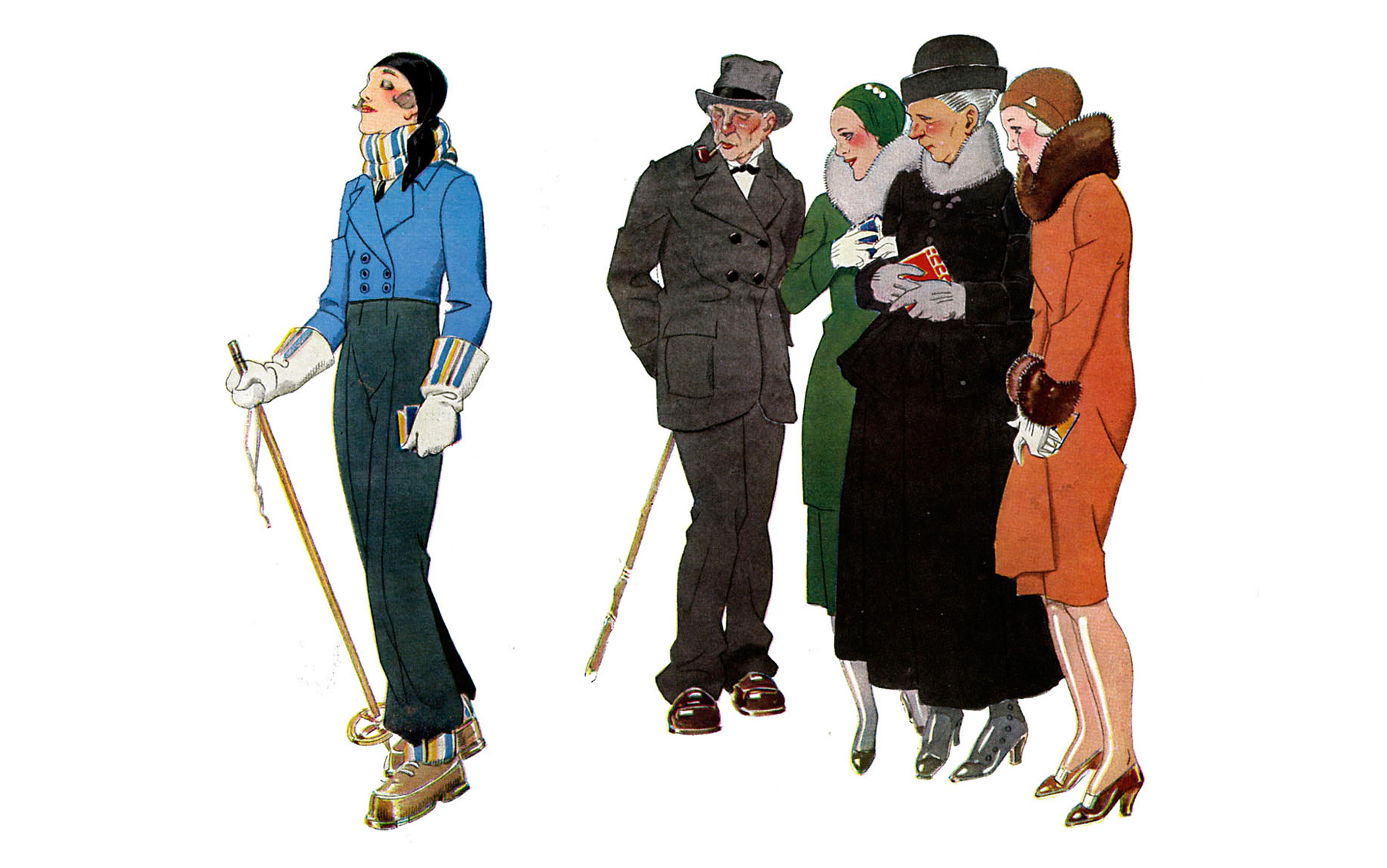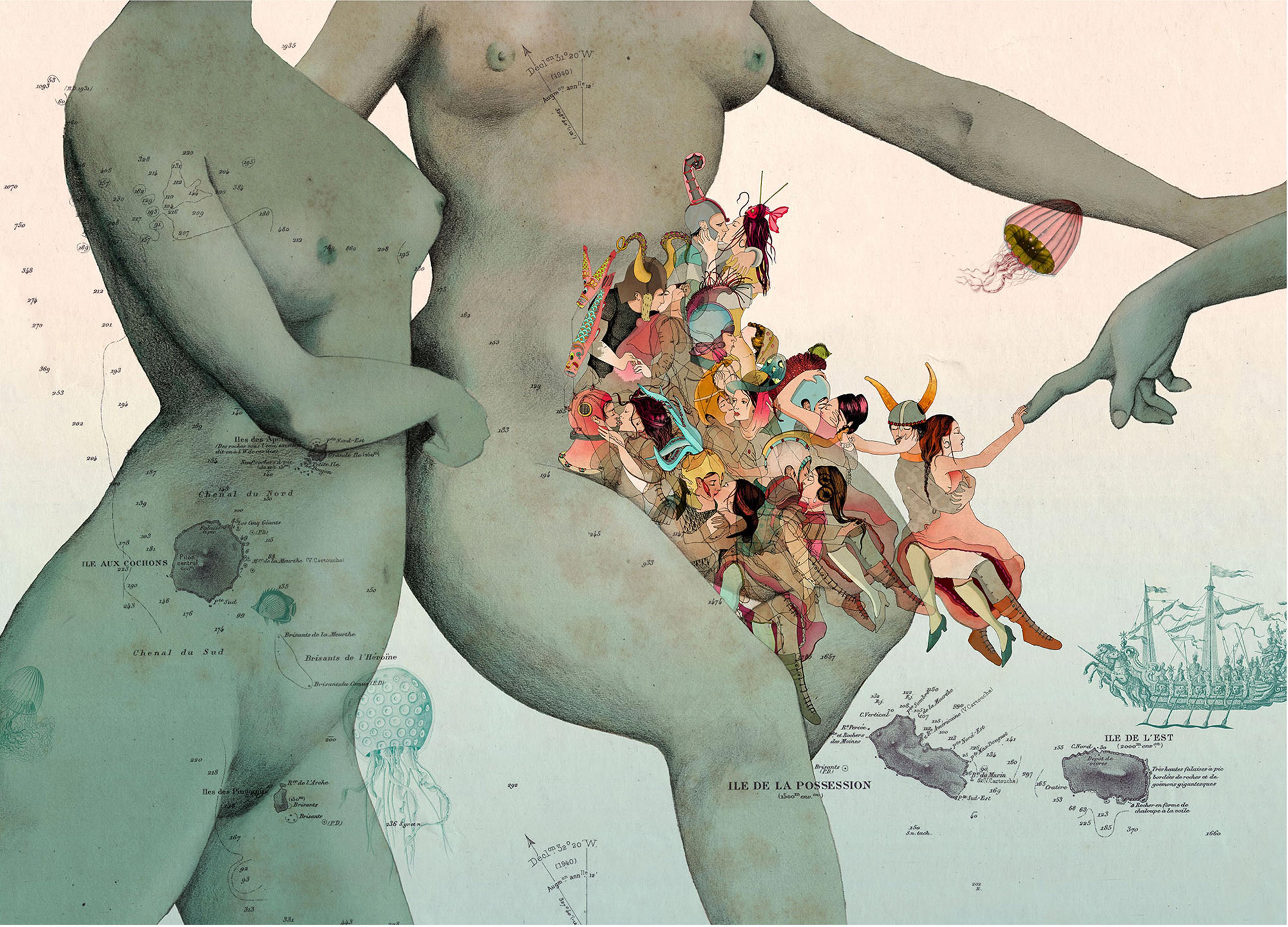A few years ago a blog called The Philosophy Smoker hosted a discussion of women’s dress. The blog’s motto (‘In which issues concerning the profession of philosophy are bitched griped about’) and its title, which refers to a type of beer-fuelled convention reception, now smoke-free but still mandatory for job candidates, give a context for the sartorial conversation. A consensus emerged: a woman philosopher’s professional attire should include make-up, discreet jewellery and low heels, but no ‘hooker’ boots, tight sweaters or plunging necklines.
In nearly 100 comments, one can read in some detail how a woman ought to present herself as an aspiring philosopher. A few participants in the discussion were, admittedly, clothing anarchists, advocating for leather attire and miniskirts. Most, however, understood very clearly that it didn’t matter what the individual woman thought about clothing, or even whether she thought about it at all. In so far as she was a woman and a philosophy job candidate, certain norms applied to her simply by virtue of her social positions.
Here, by contrast, is what the philosopher Jonathan Wolff recently had to say in The Guardian on the subject of appropriate academic attire: ‘You go to your wardrobe and randomly pull out a garment called a “pair of trousers”, another called “a shirt”, another called “a jacket”, and another called “a tie”. Then you put them on. Then you look in the mirror to make sure that you have put each in roughly the right place. The end.’ To be fair, Wolff notes in the article that dress standards might differ for women academics, but the amusing point of the article – that academics don’t worry about dress because they are happy in their work – hinges on the opening image of the (male) academic’s lack of concern with his attire. The current online diversity campaign ‘This is what a philosopher looks like’ makes its point by featuring pictures of philosophers who don’t look like philosophers, ie people of colour, and women.
The norms of appearance that apply to the philosophy job candidate (for whom lack of concern with attire is a norm) and those that apply to her as a woman lie in uneasy tension with one another. But – and this is the crucial point – the Smoker consensus was that the candidate’s gendered clothing norms trump the different norms that attach to her as a philosopher and an academic. No one said don’t worry about your dress, philosophers don’t care about such things. But why is this? Why can’t the woman candidate simply choose to identify as an aspiring academic, thereby making her attire unimportant?
My answer is that gendered norms – in this case gendered norms of appearance – trump other norms that structure our social agency, in this case again, the clothing-as-unimportant norm that governs being an academic. And, it turns out that what is true of gender norms in the world of philosophy, that lofty and abstract realm, is also true of the social world as a whole. Gendered norms trump, prioritise, and permeate the multitude of norms that structure our agency and lived experience.
On what basis do we categorise individuals as women or as men? The question draws us into the contested territory of gender essentialism. With my students, I introduce the topic by asking two things. The first is this: are there any characteristics common to all (and only) women or to all (and only) men? In other words, do genders have essences? It might be argued that women are empathetic and men aggressive. Fairly soon objections emerge. Not all women are empathetic, after all. Not all women are female human beings. Not all women have the typical anatomical and chromosomal features. Our gender cannot be equated with certain biological features of human beings. Might there be something misguided about this whole search for gender essences, which inevitably seems to exclude some women (and some men)? Many feminists who think about gender kinds draw this conclusion. Or, here’s another possibility. Might our grouping of individuals into kinds be entirely conventional, reflecting our human purposes and projects?
Perhaps we should think about gender as a social affair rather than a natural or biological one. For example, we might, with an eye towards achieving social justice, define gender kinds by including an element of subordination or dominance into the very definitions of women and men. But if being a woman is to be subordinated (in one way or another), the end of patriarchy would spell the end of women (and men). This seems an unfortunate and counter-intuitive consequence. In true Socratic fashion, an apparently simple question about men and women spins out more puzzles, tensions and complications.
However, there is another type of gender essentialism that gets much less attention, though it is arguably more important. I ask my students: would you be the same individual if you were a different gender? Almost everyone answers ‘no’ immediately. My friends and family often express surprise that I could spend years thinking about something so obvious. Even if we are not sure on what basis individuals belong to gender kinds, we are quite certain that being a woman or being a man (or being transgender) is intimately tied to our identity. Our gender is essential to who we are. Now, this is interesting. How can we simultaneously be uncertain about the basis for membership in gender kinds, and yet convinced our gender is essential to each of us?
My response is to point to the priority of gender norms in our lives. Recall the way that gender norms of attire trump academic norms for women philosophy job candidates. You don’t need to be able to define men and women in order to experience the force and priority of gender norms in ordering our day-to-day life. Our gender is normatively essential to who we are and what we do.
I did go to Berlin, but that does not alter the fact that, as a mother, I ought to have stayed home with my sick child
Perhaps surprisingly, given his status as sexist philosopher par excellence – infamous for gems like ‘a female is, as it were, a deformed male’ – Aristotle is helpful here. I borrow from his metaphysics, and his essentialism, to develop a view I call gender uniessentialism. This term is intended both to distinguish my view from kind essentialism about gender, and to emphasise the unifying role that Aristotelian essences play. Unlike kind essentialism, mine is not a theory of how we sort people into gender kinds. Rather, the prefix ‘uni’ is short for ‘unification’ and uniessentialism holds that gendered norms trump, prioritise and permeate other social norms and, in doing so, unify our social agency.
We are all subject to multiple sets of conflicting norms. Should I give that important paper in Berlin or should I stay home with my daughter, who has a temperature? Which norms rule, professional or parental? According to gender uniessentialism the gender norms that make up the social role of being a woman or being a man (or being transgender) thread through the various normative strands of a life and draw them together at a time and over time. Because I am a woman I face a different calculus of norms in our situation than a man would. Because of my gender, parental norms (maternal norms), trump professional norms.
In the event, I did go to Berlin, but that does not alter the fact that, as a mother, I ought to have stayed home with my sick child. Gender uniessentialism is important because it intersects with questions of the self and identity and also because of the connection it draws between what we are, gendered individuals, and, as a consequence, what we ought to do. In other words, gender uniessentialism is, among other things, a theory about our social agency and the gendered norms that govern and shape it.
Let’s take a closer look at the essentialism part of gender uniessentialism. For Aristotle, essences were unifying, not classifying. An essence is what makes something an individual; it is what unifies parts into a functional whole. For instance, both artefacts and biological organisms have material parts that are organised into an individual, and that individual is not identical to the sum of its material parts. We could replace a leg and the table would still exist. Bob would remain himself through a kidney transplant. Why is that?
Here is Aristotle’s answer. Consider a house. A house is a sum of parts that are arranged in order to realise the functional property of being a shelter for human beings. This property is uniessential to the house. It unifies the building materials (or parts) into a new individual. It is because these bricks and boards (or these windows and doors) are arranged for the sake of the function of providing shelter to human beings that an individual house exists. If the very same parts were scattered across a junkyard (or neatly arranged at Lowe’s) then they would not fulfil the house function and a house would not exist.
Now, you might be thinking it is clear enough how, in the case of an artefact, the functional essence unifies the material parts into an individual, but that it isn’t clear what our gender unifies. And it isn’t clear what notion of unity is relevant. But consider. At any given moment, each of us occupies multiple positions – professor, parent, daughter, athlete – and each social position brings with it an associated set of norms – the social role. For the parent, the family comes first; for the professor, it is knowledge and truth. With social agents like us, the kind of unity at issue is normative unity, and the things to be unified are social roles or sets of norms. Gender unifies our agency by trumping, prioritising and inflecting our other social roles in a holistic fashion. For a woman parental norms are really maternal norms, and they ought to trump professional values. Not so for men.
What a norm requires and whether or not an individual has satisfied it are not up to the individual to decide
The University of New Hampshire gives parental leave when a child is born or joins a family through adoption. Although this leave is available to both parents, a recent study showed that of 200 academics, only 12 per cent of men against 69 per cent of women took the leave. Apparently if the individual is a woman, her gender norms concerning parenting generally trump the norms of her academic social role; if a man, generally not. Or consider the discussion of philosophical attire with which we started. A philosopher may dress like Jonathan Wolff, but not if she is a woman.
Of course, this whole analysis rests upon an idea about how certain norms dictate how we ought to act. I use the terms ‘norm’ and ‘normative’ very broadly to encompass everything, from what God has ordered us to do, to which fork to use for the fish course at dinner, to how to sit, and everything in between. One can think of norms as rules, and in some cases that’s exactly what they are. Yet many norms are more like tacit, habitual ways of doing things. Think of the recent chatter about the amount of space men take up sitting on a subway train. We can be responsive to a norm without realising it. Most white people are not aware of being raced, much less the constellation of norms that constitute that social role.
Equally importantly, norms are socially established and socially enforced. What a norm requires and whether or not an individual has satisfied it are not subjective matters; they are not up to the individual to decide. A student is expected to sit at a lecture through to the end (no matter how boring it might be), and will be judged by others if she does not do so. She is answerable to the norm simply because she is a student. Getting up and walking out is an option for her, of course, but it would mean breaking the norm about lecture attendance. And you can only break a norm if it applies to you.
How does one become answerable to the norms of a particular gender? Well, gender is attributed to us by the recognition of others – doctors, parents, schools, etc. I have, moreover, argued that it is attributed to us on the basis of our perceived reproductive function (one might say, on the basis of our engendering function). This means that our gender is not up to us to determine. Of course, some of us reject our socially recognised gender identity, either as a whole or in part, but that is entirely compatible with the basic idea that our gender identity is fixed by social recognition. You cannot reject what you do not have. Gender identification – the psychological, subjective understanding of gender by an individual – is not gender identity in the sense that I use the term here.
There is an alternative perspective on gender and social normativity. Feminists in the liberal and Kantian tradition stress the autonomous agent’s choice in determining what norms she is responsive to. For them, the woman candidate for an academic job could (and probably should) choose to ignore her gendered norms of dress in favour of her self-image as an academic. Alternatively, the woman could choose to fulfil her gendered norms of attire instead. It is really up to her to decide which norms are her norms. And so, what is politically important is that she has a choice.
Aristotelians like me, by contrast, see the issue of choice as largely beside the point, and focus instead on the organisation and unity of our social roles by gender, and the ways in which women are disadvantaged by the gendered social world. Because social roles are gendered in an asymmetrical fashion, in a manner that is oppressive to women – that is, because patriarchy exists – justice requires a refashioning of the available social roles and the ways in which social roles can and cannot be merged into a coherent practical identity.
The good news is that the normative structure of the social world is not set in stone. Think about the rapid change in the norms governing matrimony and the family ushered in by the advent of gay marriage. This political development created new normative possibilities and novel social roles for an institution that had seemed inextricably mired in tradition. The shifting norms of marriage and the family, in turn, could create possibilities for shifts in the often incompatible and gendered norms governing parenting and work.
Same-sex couples might well use parental leave in ways that disrupt entrenched patterns. It seems to me likely that this kind of social innovation will disrupt the gendered social roles far more effectively than any individual acts of rebellion. I situate feminism, the politics of gender, in the gap between the lives that are socially recognised and available to us, and the lives that we want to be able to live. And there is some reason to think that shifts in gendered social norms would be welcomed by many of us, not just by women.






